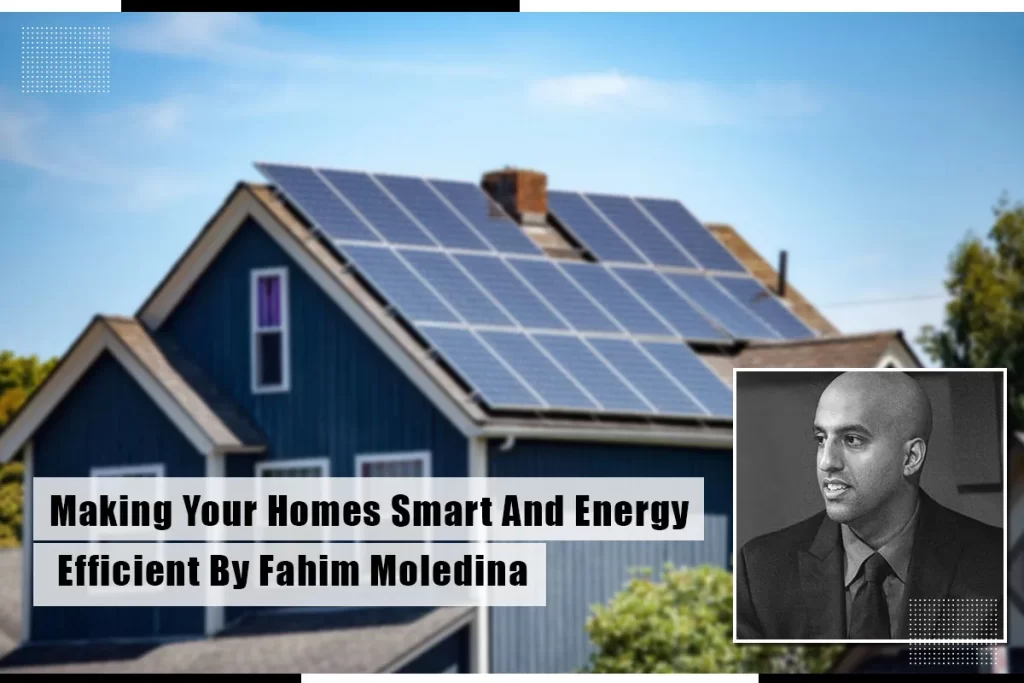When your carefully heated or cooled home loses its warmth or cool, neither your wallet nor the environment wins. According to Fahim Moledina research, the average energy consumption in US homes is 867 KW/h, of which the greatest is spent on heating, lighting, and air conditioning.
With the building of smart tech homes, that usage can be trimmed down, saving your money and reducing your carbon footprint. Fahim Moledina brings you a few of the ways you can conserve energy, making your homes smart and energy-efficient.
Keeping Track Of The Numbers
You can create a conservation chart or methodology only when you know how you are actually consuming it. To keep track of your energy consumption patterns, you can hire an energy auditor or make use of online tools that walk you through your home, note down your lifestyle, and even give you recommendations.
The tech-savvies can make use of the numerous apps available, whereas for the more conventional ones, you can plug in your electricity cost/KW/H to get an estimate of your monthly bill. Once you get the estimate of your bill, you can then set goals to reduce it.
Working On Your AC and Heating
Forgetting to turn off your air conditioners or heaters is not uncommon. In fact, Fahim Moledina, in his study, found out these practices to be the biggest energy cobblers. However, there are ways to make your homes energy-friendly. You can use smart thermostats that use sensors to tell whether you are away or not to turn down the heating or cooling. The use of energy-saving adjustments also allows for automatic adjustments that are made in line with the local weather data. Use your smart thermostats with tablets or smartphones and equip them with sensors to make your life easier!
Insulation Fixes
Insulation fixes in another smart way to cut down your bill. Even small improvements can make huge budget savings. From window film insulation to covering baseboards and checking ductwork for leaks, there are numerous ways to make huge differences in your bill.
Switch Off Your Appliance Smartly
Use more energy-efficient lights that you can dim out when not at home. Also, you can use energy-conserving switches that are easy and affordable. They are the simplest and easiest of ways to reduce phantom load. Purchase appliances that are energy-efficient by replacing the decades-old appliances that have the lion’s share in your energy bills.
The Washing And Drying Tips
Using heated water to wash clothes also consumes more energy. Instead, you can go for cold water with detergents formulated to work in cold water. Replace your old heater and washing machine model with the new, much more efficient ones that will also save you from mopping the dribbling water that floods your floors.
The tank less water heaters, apart from their pricey up-front cost are the best way to get warm water running through the pipes only when needed! The instant, on-demand hot water saves electricity loss and misuse. The lower the use of energy the lower your energy bill. Since there is no way to save energy when drying clothes, you can get your dryer to an automatic cycle that stops once the sensor detects the absence of moisture.
With these conservation practices and energy-efficient devices, your home does the work for you while you don’t need to develop any new habits. Fahim Moledina simple yet tech-savvy instruments of energy conservation prove to be money and environment savers that bring you to the new revolutionized world without harming the older one!
Read More About: Fahim Moledina

